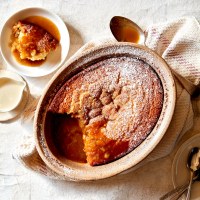Types of sugar and how to substitute them
When you walk down the baking aisle, there are so many different types of sugar. What’s the difference between white sugar, caster sugar and brown sugar? What about palm sugar and coconut sugar? And do you really need all of them?
The good news is that sugar stores almost indefinitely so it can be worth buying different types, but you can also substitute many sugars for one another in a pinch. These are the common types of sugar in Australia and how you can substitute them.
White sugar
White sugar is the most commonly used sugar. It is made from sugar cane, and is highly processed with all the natural brown molasses removed, leaving it pure white. It comes in different crystal sizes from granulated to caster to icing sugar.
If a recipe calls for sugar, white sugar, granulated sugar or table sugar, they are all referring to the standard sugar crystal size. If a recipe calls for caster sugar, it is different. See below.
Caster sugar
White sugar is milled into smaller crystals. It’s also called superfine sugar. It dissolves more easily, making it perfect for recipes like custard from scratch, meringues and cakes.
In most recipes you can substitute granulated sugar for caster sugar and vice versa. However, one cup of granulated sugar does not equal one cup of caster sugar.
It’s best to measure by weight:
- 1 cup of caster sugar = 225g
- 1 cup of granulated sugar = 220g
TIP: Caster sugar can be made at home by processing granulated sugar in a food processor for a few seconds.
Caster sugar has a light texture which is ideal for baking, including in scones. In a pinch you can use granulated sugar instead and get very similar results.
GET THE RECIPE:
Icing sugar
Made by crushing white sugar into powder, it has other names including confectioner’s sugar and powdered sugar. It dissolves instantly and is perfect for icings, whipped cream, and sugar cooking.
There are two major types, pure icing sugar and icing sugar mixture. Pure icing sugar can become lumpy and needs to be sifted. Icing sugar mixture is blended with cornflour to stop lumps.
These are interchangeable, except when cake decorating. Cornflour in icing sugar mixture holds moisture which can allow mould to grow on your decorations, so use pure icing sugar.
Brown sugar
Brown sugar is refined white sugar with molasses added back to it. It contains more calcium, iron and potassium than white sugar.
Brown sugars have a more intense, deep flavour and are softer and moister. They are great for baking and for butterscotch sauce.
When a recipe refers to light brown sugar or brown sugar, they are the same. However, dark brown sugar is different, see below.
If using brown sugar as a substitute for white sugar, your cooking will darken faster. You may need to adjust cooking temperatures and time.
TIP: You can make brown sugar by mixing 1 cup of white sugar with 1 tablespoon of molasses.
Dark brown sugar
Contains double the amount of molasses than light brown sugar. This gives the sugar a deep and complex toffee and caramel flavour.
TIP: Mix 1 cup of white sugar with 2 tablespoons of molasses to make dark brown sugar.
Muscovado sugar
A rich and moist unrefined sugar that has lots of molasses. It is very dark and sticky with an intense toffee-like flavour. Replace with dark brown sugar if unavailable.
Raw sugar
A semi-refined sugar with a light caramel colour and a delicate and aromatic molasses flavour. It has a similar crystal size to granulated sugar. Its attractive colour makes it favoured for sprinkling on baked goods. Substitute with light brown sugar or white sugar.
Demerara sugar
Demerara sugar is partially refined sugar with a straw-like colour and slight butterscotch aroma. It looks like raw sugar but with larger crystals that are good for sprinkling on baked goods for crunch. If unavailable, substitute with light brown sugar or raw sugar.
Sanding sugar
A decorative sugar with large crystals and an attractive shine. Comes in different colours and is used to decorate baked goods. It has a high melting temperature so it won't melt when baked.
Palm sugar
Palm sugar is extracted from sugar palm trees. The sap is collected from the flowers or a tap in the tree trunk, then boiled down to syrup or crystallised to form a block. Commonly used in India, Southeast Asia and some African countries.
Jaggery is the darker, winey flavoured variety used across India, whereas the lighter more caramel flavoured palm sugar is most common in Southeast Asian cooking. Both are available in Australia. If unavailable, substitute with light or dark brown sugar.
Monk fruit
Native to Southeast Asia, Monk fruit (also known as Luo Han Guo) has been used for centuries in traditional Chinese medicine for its potent natural sweetness. Monk fruit is naturally sweet but contains zero calories and has a glycaemic index of zero, making it an ideal sweetener for those watching their sugar intake or managing blood sugar levels. It measures just like sugar, making it easy to substitute in your favourite recipes without sacrificing taste.
Coconut sugar
Also considered a type of palm sugar, coconut sugar comes from the sap of a coconut tree instead of a palm tree. The sap is boiled until the moisture evaporates. Coconut sugar only contains 75% sucrose and has a lower glycaemic index than other sugars.
Coconut sugar is similar in flavour and texture to brown sugar. Substitute any recipe using white sugar with coconut sugar by replacing 1:1 ratio. Coconut sugar will deepen the colour of your food, so make sure that is appropriate for your recipe.
GET THE RECIPE: Wholemeal Date and Walnut Loaf by Australian Eggs
Brown sugar gives this loaf a beautiful rich colour and flavour thanks to the extra molasses in it.
























